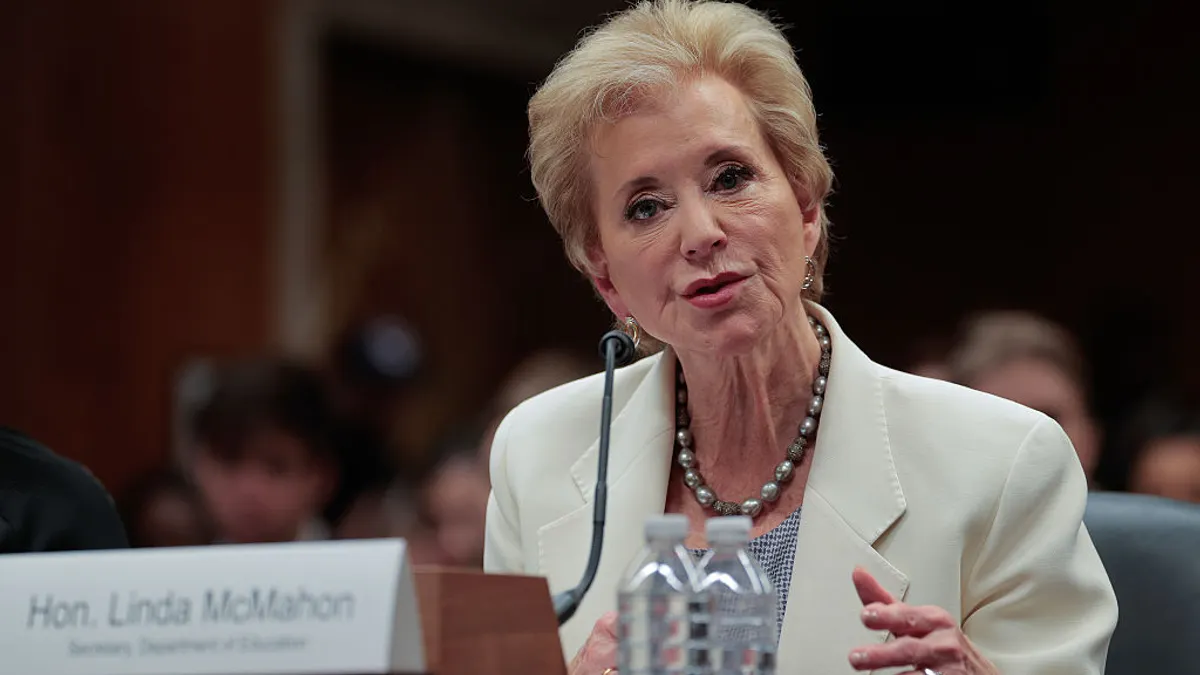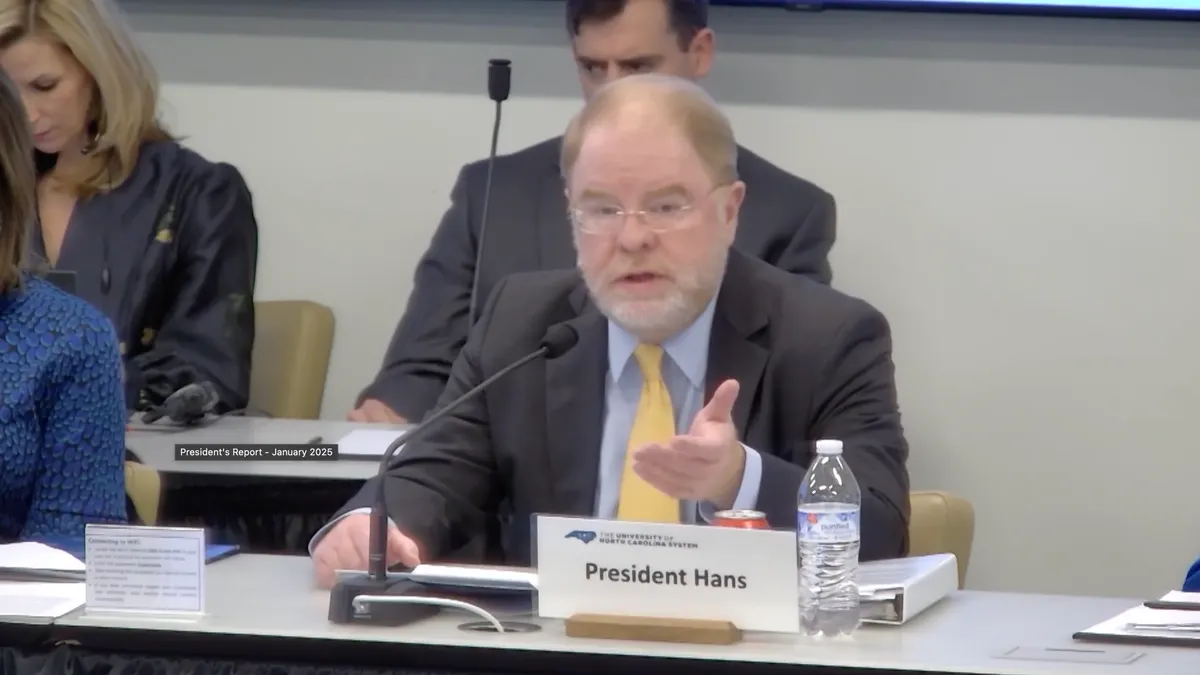A newly issued federal rule to ensure web content and mobile apps are accessible for people with disabilities will require public K-12 and higher education institutions to do a thorough inventory of their digital materials to make sure they are in compliance, accessibility experts said.
The update to regulations for Title II of the Americans with Disabilities Act, published April 24 by the U.S. Department of Justice, calls for all state and local governments to verify that their web content — including mobile apps and social media postings — is accessible for those with vision, hearing, cognitive and manual dexterity disabilities.
For example, students, staff and parents who are deaf currently may be unable to access information in web videos and other digital presentations lacking captions. People with low vision might not be able to read websites or mobile apps that do not allow text to be resized or provide enough contrast.
Additionally, individuals with limited manual dexterity or vision disabilities who use assistive technology can find it difficult to access sites that do not support keyboard alternatives for mouse commands.
“This final rule marks the Justice Department’s latest effort to ensure that no person is denied access to government services, programs, or activities because of a disability,” said U.S. Attorney General Merrick Garland, in a statement on April 8, the day Garland signed the rule.
Understanding challenges in the community
Mary Rice, associate professor of literacy at the University of New Mexico, recommends that school districts prepare for compliance by doing an inventory of their digital materials.
Rice, who has spent the past 10 years conducting research on accessibility and online learning, also suggests that districts first consider who in their community has accessibility challenges, whether they are students, teachers, staff, families or guardians.
For instance, if a district enrolls a 3rd grader with low vision, it should prioritize making grade 3-4 materials compliant, Rice said. Or if students have caretakers who are grandparents with accessibility challenges, districts should look at those considerations.
For public universities and colleges, Rice predicts that more collaboration will be needed between teaching faculty and instructional design staff who support course development so those materials come into compliance. Rice also said universities will need to figure out how to ensure that PDFs of academic journal articles assigned to students by professors are accessible.
"Spending your whole life advocating for yourself" to get accessible materials is "demoralizing and draining and inappropriate," Rice said. The new regulations will "hopefully bring this to the attention of schools and school leaders, and we'll make some headway."
Disability rights advocacy groups have for some time been pressing the federal government to update accessibility standards. On April 12, Disability Rights Florida issued a statement calling the rule "historic and exciting."
A joint May 2023 Dear Colleague letter from DOJ's Civil Rights Division and the U.S. Department of Education's Office for Civil Rights said OCR had resolved and monitored more than 1,000 cases related to digital access in recent years. The cases were initiated by complaints of discrimination from the public.
Earlier, in May 2022, OCR proactively opened 100 compliance reviews on digital accessibility at state departments of education, school districts, charter schools, public and private universities, and public libraries.
Becoming compliant
The nearly 300-page rule goes into effect June 24, but governments and public institutions, including public schools and universities, have two or three years to comply. The compliance date depends on the population size within a state or local jurisdiction.
For K-12 schools, this means that if a school district is located in a county or city with a population of 50,000 or more, it must comply by April 24, 2026. Public state universities would also have an April 24, 2026, compliance deadline, as they are considered a state entity. However, a county community college or K-12 school district in the same state located in a county or city with 49,999 or fewer residents would have a later compliance deadline of April 26, 2027. Special district governments — such as independent school districts — also must comply by April 26, 2027.
School districts, particularly larger districts with in-house technology experts, should already be compliant or be able to become compliant relatively quickly, said Jose Martín, an attorney with the Richards, Lindsay & Martín law firm in Austin, Texas, which represents school districts.
Since the rule requires minimum technical standards and OCR has been enforcing accessibility access, the rule and compliance requirement should not come as a big surprise to districts, he said. "This is well-trod ground."
Still, some accessibility experts say the new rule could mean schools and universities have significant work to meet the accessibility requirements.
Raymond Rose, chair of the public policy committee for the Texas Digital Learning Association, said schools will need to meet these updated accessibility standards for digital materials just like they need to abide by ADA rules for physical accessibility in buildings.
That will include ensuring websites, mobile apps and digital textbooks contain accessible text, images, sounds, videos, controls, animations and more. The rule sets the Web Content Accessibility Guidelines (WCAG) Version 2.1, Level AA, as the technical standard for compliance. WCAG is widely used across the world and in multiple languages, according to the Bureau of Internet Accessibility, a company that helps companies make their information accessible.
The Justice Department said it expects the regulation will result in increased demand for accessible content from third-party vendors, and therefore an increase in the number of third-party vendors equipped to provide accessible digital textbooks.
Nearly every piece of digital material hosted by a local government will need to be compliant, including web content that is password protected. Some exceptions include archived web content for recordkeeping or reference that has not been updated since the entity's compliance date kicked in, pre-existing social media posts, and content posted to a government site or mobile app by third parties, unless those contributors have a contract, license or arrangement to post to government websites.
Given the scope of potential web accessibility improvements, the deadlines may be tough to meet for school districts and universities that have lots of digital content not already accessible under the WCAG standard, according to Rice of the University of New Mexico.
"This is going to throw a real wrench into Teachers Pay Teachers and other stuff like that," Rice said, referring to the online marketplace for instructional resources.
Teachers Pay Teachers, when asked to respond, declined to comment.
Rice recommends that school districts be leery of vendors that promise to quickly make their web content compliant. "Schools should keep their eyes peeled and their pocketbooks guarded," Rice said. "I can almost always promise you that anybody who says that they can do it fast and quick is a liar."






















